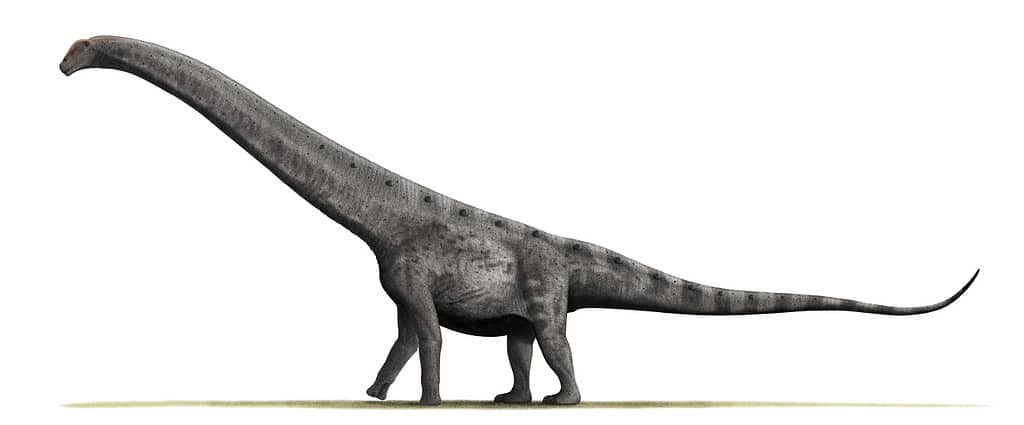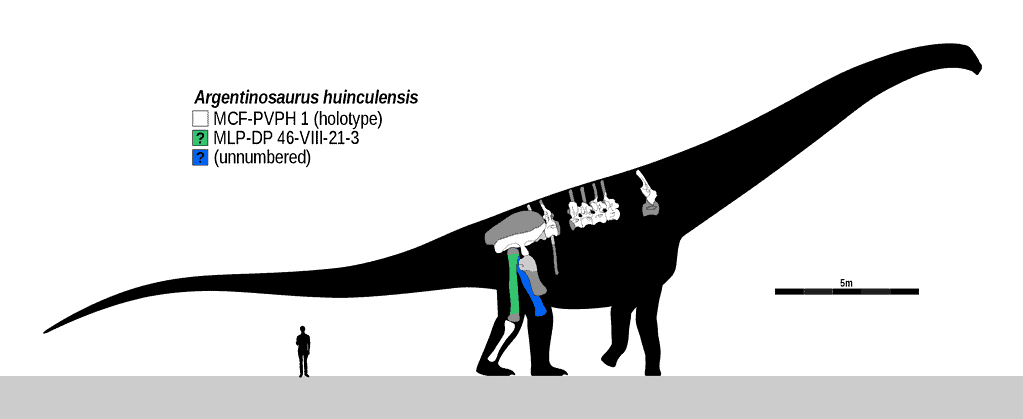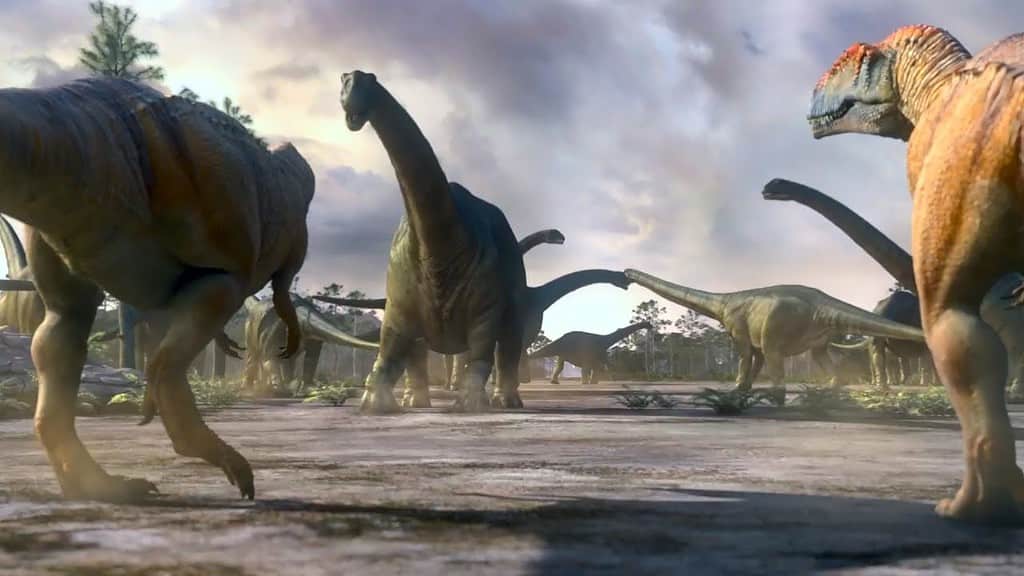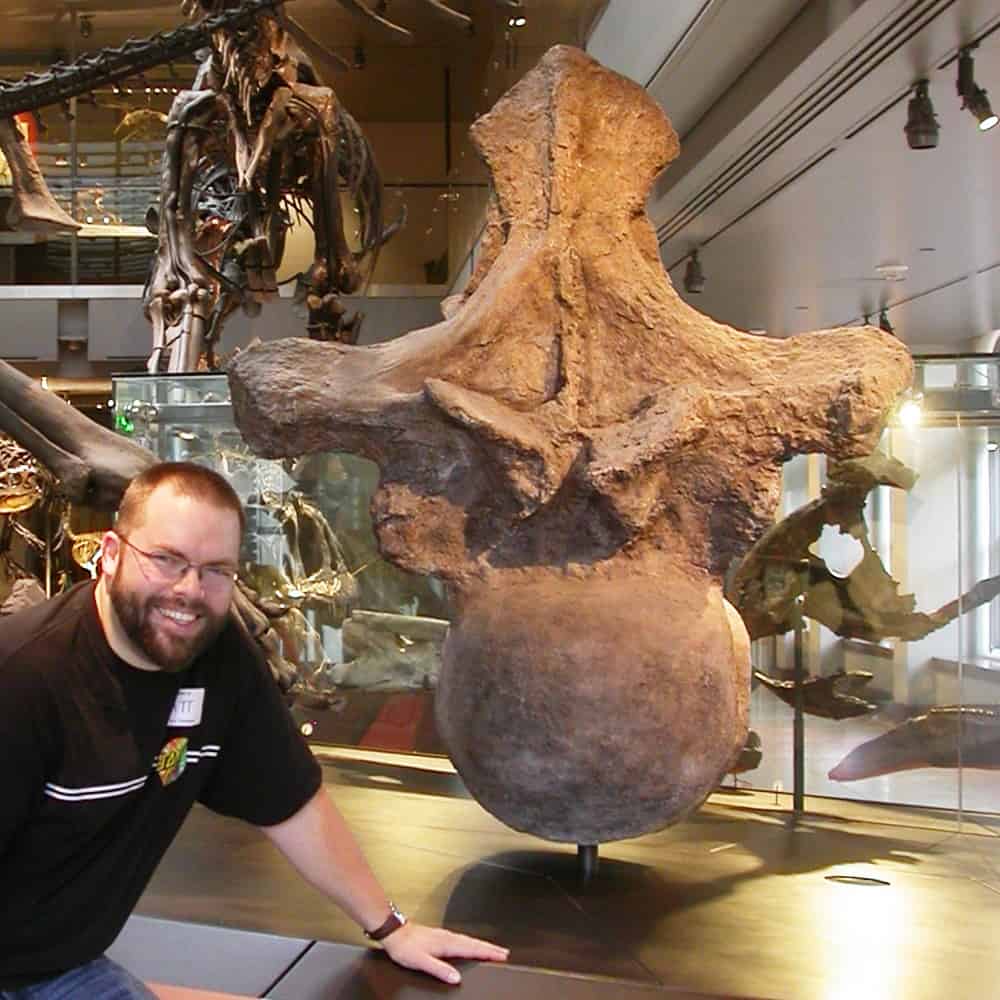
In the vast expanse of prehistoric Earth, the Argentinosaurus stands out as a giant among giants. This sauropod dinosaur lived in the lands of modern-day Argentina during the Late Cretaceous. Although it’s known solely from fragmentary remains, Argentinosaurus is recognized as one of the largest dinosaurs that have ever existed. This article delves into the discovery, anatomy, and significance of Argentinosaurus, unveiling the story of this ancient behemoth that once roamed the Earth.
Discovery and Naming
The story of Argentinosaurus begins in 1987, on a farm near Plaza Huincul, Neuquén Province, Argentina. A local farmer, Guillermo Heredia, stumbled upon what he initially mistook for petrified wood. This accidental discovery piqued the interest of paleontologists, leading to a scientific excavation headed by José F. Bonaparte in 1989. The team unearthed several back vertebrae, parts of a sacrum, and a complete femur, laying the groundwork for the identification of a new dinosaur species.
In 1993, Bonaparte and Rodolfo Coria first described and named Argentinosaurus huinculensis. The genus name means “Argentina Lizard”, an homage to the country of its discovery, while the dinosaur species name references the Huincul Formation where it was first found. Heredia’s fossil bone discovery, initially identified as a tibia, was later reclassified as a fibula.
Anatomy and Size
Argentinosaurus‘ fragmentary remains suggest it was the largest land animal ever known to science. The discovered elements—back vertebrae, a sacrum, and femurs—provide crucial insights into its massive structure. The vertebrae, colossal even by titanosaur standards, suggest a robust and sturdy animal, capable of supporting an immense body. The complete femur, measuring around 2.5 meters in length, along with a similarly sized shaft of another, indicates powerful limbs that could manage to carry this giant.

Estimating the size of Argentinosaurus has been a complex task, given the incomplete nature of its remains. By comparing the known parts with more complete skeletons of related titanosaurs, scientists have developed a range of estimates. Lengths of 30 to 35 meters and weights between 65 to 80 tons can easily crown Argentinosaurus as the largest known land animal. These estimations are derived from scaling up smaller sauropods and using mathematical models to calculate mass. For context, its length rivals that of a basketball court, and its weight is equivalent to a herd of about ten elephants. Such comparisons help us grasp the sheer scale of Argentinosaurus, a true titan of the Mesozoic era.
Paleobiology
Argentinosaurus‘ massive size suggests a lifestyle adapted to consuming vast quantities of vegetation. It possessed a long neck, enabling it to reach high into trees or sweep over large areas to graze. This feeding strategy would have required a large territory to provide enough food to sustain its enormous body. The slow movements implied by its limb structure suggest Argentinosaurus was not a migratory dinosaur. The animal most probably lived in rich, resource-abundant environments that could support its dietary needs.

The locomotion of Argentinosaurus has been a topic of spirited debate. A computer model based on its skeletal structure suggests a maximum speed of around 7 km/h, with a pace gait— the limbs on one side of the body move together. However, this model indicates that despite its size, Argentinosaurus could move quite efficiently. The pace gait, specifically, would have provided stability to its massive body, reducing the energy expenditure required for movement.
Argentinosaurus’ Habitat
Argentinosaurus lived during the Late Cretaceous period, approximately 96 to 92 million years ago. It inhabited the region now known as the Huincul Formation in Neuquén Province, Argentina. This geological formation presents a snapshot of a rich and diverse ecosystem, characterized by yellowish and greenish sandstones indicative of riverine environments. The Huincul Formation’s diverse fauna and flora suggest a landscape that could support large herbivores like Argentinosaurus.

The Huincul Formation was home to a variety of other dinosaurs, including large theropods like Mapusaurus, which may have preyed on or scavenged Argentinosaurus remains. Other notable contemporaries include the rebbachisaurid sauropods and various abelisaurid and carcharodontosaurid theropods. This diversity points to a complex ecosystem where Argentinosaurus played a significant role as one of the primary vegetation consumers.
The Significance of Argentinosaurus in Paleontology
Argentinosaurus‘ sheer size challenges our understanding of dinosaur physiology and biomechanics. This animal’s discovery has prompted questions about growth rates, reproductive strategies, and the limits of terrestrial vertebrate size. The study of Argentinosaurus contributes significantly to discussions on sauropod gigantism, an area of keen interest in evolutionary biology. It serves as a key example in studies exploring how these dinosaurs supported their massive bodies, how their skeletal structure adapted to such sizes, and what ecological roles they played within their environments.

Despite its importance, the fragmentary nature of Argentinosaurus remains poses significant challenges. Reconstructing its life appearance, behavior, and precise ecological niche requires careful interpretation and comparison with more complete sauropod fossils.
Conclusion
The journey through the world of Argentinosaurus huinculensis reveals a story of discovery, scientific curiosity, and the relentless pursuit of knowledge about Earth’s past. From its initial uncovering by a local farmer in Argentina to the extensive research efforts that have followed, this animal emerged as a symbol of prehistoric gigantism. It exemplifies the challenges of studying dinosaurs, providing key insights into sauropod anatomy, behavior, and evolution. Argentinosaurus not only pushes the boundaries of what we understand about dinosaur size and physiology but also serves as a peek into the ecological dynamics of the Late Cretaceous period.






